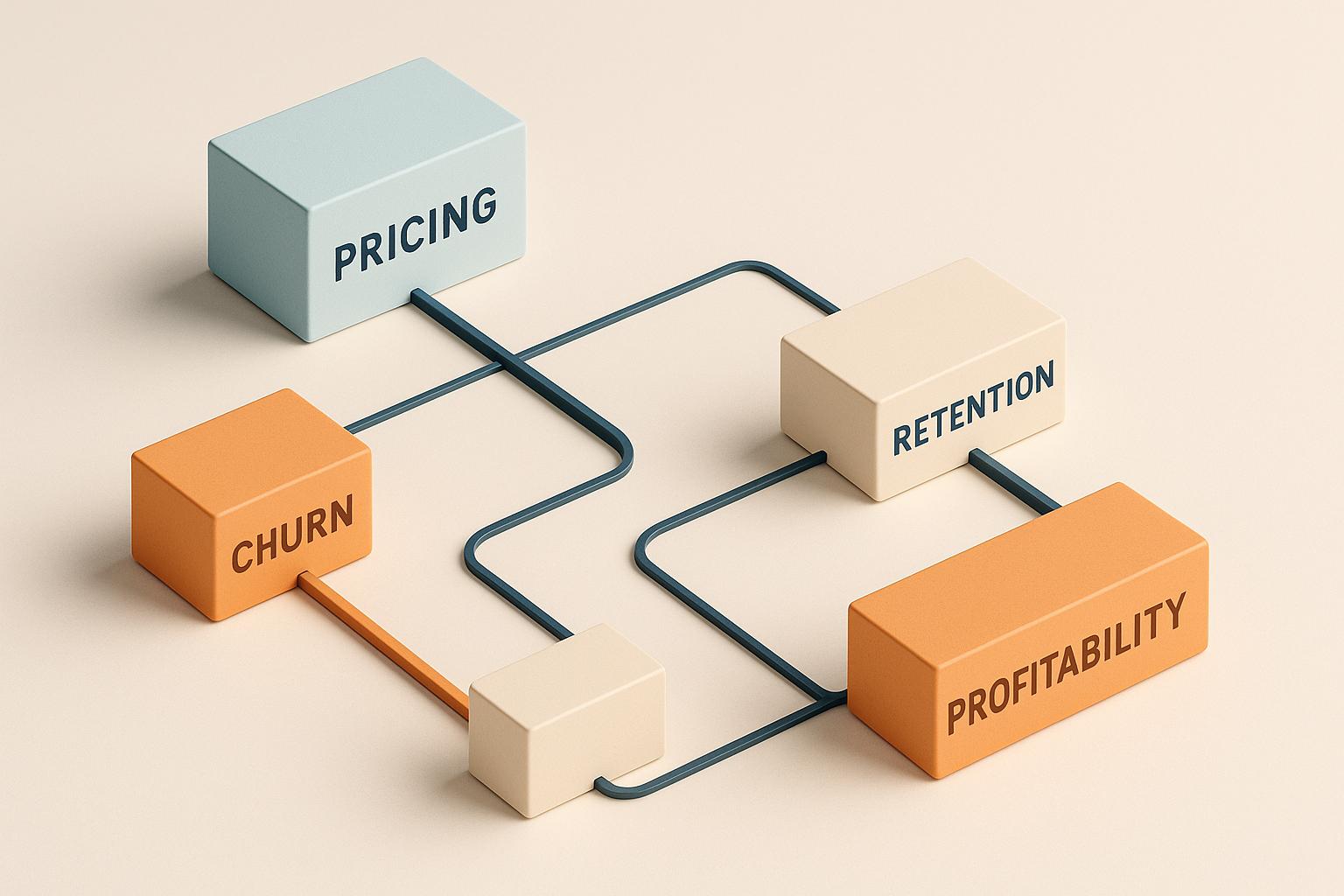AML Compliance for Crypto M&A: What to Know

Crypto M&A is booming, but AML compliance is more critical than ever. With M&A activity in the crypto sector growing by 22% in Q1 2024 and regulatory fines hitting $5.8 billion in 2023, companies must prioritize Anti-Money Laundering (AML) measures to avoid risks. Here's what you need to know:
- Key Challenges: Cross-border regulation gaps, verifying transaction sources, and fast-evolving blockchain technology.
- AML Tools: Blockchain analysis tools (e.g., Chainalysis Reactor) for tracking suspicious activities and ensuring compliance.
- Best Practices: Conduct thorough due diligence, implement real-time monitoring, and train staff on AML protocols.
Falling short on AML compliance can lead to hefty penalties and stalled deals. Stay ahead by integrating strong AML frameworks into your crypto M&A strategy.
Main AML Risks in Crypto M&A
Cross-Border Regulation Gaps
Navigating international AML regulations can be a maze for crypto M&A deals. Each country sets its own compliance standards, making it hard to align practices. For example, the European Union's Fifth Anti-Money Laundering Directive (5AMLD) enforces strict rules on crypto exchanges, while other regions take a more relaxed stance.
This lack of uniformity makes tracing cryptocurrency origins - a key part of AML compliance - much more complicated.
Transaction Source Verification
Verifying where cryptocurrency comes from is a major hurdle during due diligence in crypto M&A. The anonymity of many transactions can obscure illegal activities and make it tough to confirm legitimate fund sources.
Blockchain analysis tools, like Chainalysis Reactor, are now critical for monitoring transactions. These platforms help track crypto movements and spot patterns linked to money laundering.
Tech Changes and Compliance
The blockchain world changes fast, and this keeps AML compliance teams on their toes. New transaction methods, protocol updates, and DeFi platforms constantly introduce new challenges. The Financial Action Task Force (FATF) has broadened its definition of virtual asset service providers (VASPs) to include entities like stablecoin issuers, DeFi protocols, and NFT marketplaces, adding more layers to AML requirements.
To stay compliant, companies need adaptable strategies that address evolving risks. For instance, the U.S. Office of Foreign Assets Control is paying closer attention to crypto transactions, emphasizing the importance of strong sanctions controls and continuous monitoring.
Key steps for managing these challenges include:
- Real-time monitoring of new transaction types at the protocol level
- Auditing smart contracts to identify compliance risks
- Enhanced due diligence for integrating DeFi platforms
Keeping up with these shifts demands a forward-thinking approach, using advanced tools and strategies to stay ahead in compliance.
AML Compliance Methods for Crypto M&A
Due Diligence Steps
When it comes to AML compliance in crypto M&A, thorough due diligence is key. This involves digging into financial records to uncover any irregularities or hidden risks. Special attention should be given to smart contract interactions, wallet addresses, and transaction patterns.
Due diligence ensures that transaction histories are verified, asset ownership is confirmed, and AML policies are reviewed. To support these efforts, blockchain analysis tools can offer critical insights into transaction behavior and potential risks.
Blockchain Analysis Tools
Blockchain analysis tools are essential for monitoring transactions in real time and spotting suspicious activity that could signal money laundering. For example, Chainalysis Reactor is particularly effective at tracking fund flows and connecting illicit activities to real-world entities.
Some standout features of these tools include:
- Monitoring transactions across multiple blockchains
- Assigning risk scores to wallet addresses and transactions
- Conducting forensic analysis of transaction histories
While these tools are powerful, staying compliant with global regulations requires more than just technology.
Meeting Global AML Rules
With varying regulations across jurisdictions, staying compliant with global AML rules requires a proactive approach. The Digital Asset Anti-Money Laundering Act of 2022 introduced new mandates that companies must now integrate into their compliance plans.
To stay on top of compliance, companies should:
- Keep track of regulatory updates
- Implement robust verification processes
- Maintain detailed documentation of all AML activities
Regular audits and system updates are crucial to keeping up with changing rules. Building flexible compliance frameworks ensures companies can adjust to new requirements as they arise.
AML Compliance Setup Guide
Risk Assessment Methods
When it comes to risk assessment in crypto M&A, the goal is to pinpoint compliance gaps and evaluate risks based on transaction behavior, jurisdictions involved, and counterparties. This methodical process helps organizations gauge their exposure to potential compliance issues.
Key steps include examining where transactions originate, assessing jurisdictional risks, and reviewing the compliance history of counterparties.
After identifying risks, the next move is adopting the right tools to manage and ensure compliance effectively.
AML Software Implementation
As blockchain technology continues to evolve, AML software has become essential for staying compliant. Modern tools excel in real-time monitoring, automated reporting, and risk evaluation.
"By automating routine tasks, these technologies reduce the risk of human error and ensure that compliance efforts are consistent and thorough", says Owen Rapaport, Executive Director of Product Management at StarCompliance.
Top AML software solutions include features like PEP screening, sanctions monitoring, KYC verification, and automated reporting. Businesses should choose software that matches their compliance needs and operational scale.
Staff AML Training
Even the most advanced tools are only as effective as the people using them. AML compliance relies heavily on a well-trained team. Training programs should cover regulatory updates, practical use of AML tools, and incident response strategies to ensure staff can handle compliance violations properly.
Key training areas include:
- Regulatory Knowledge: Employees need a solid understanding of current AML regulations and how they apply to crypto transactions.
- Technical Skills: Hands-on experience with AML software and blockchain analysis tools is crucial. This includes recognizing suspicious patterns and preparing accurate reports.
- Incident Management: Staff should be equipped to document and escalate suspicious activities, following established protocols.
Detailed training records should be maintained, including certificates and performance evaluations, and kept for at least five years. Regular assessments ensure teams stay sharp and ready to tackle new compliance challenges. A well-trained team is essential for navigating the complexities of AML compliance.
sbb-itb-e766981
Phoenix Strategy Group M&A Services
M&A and Risk Services
Phoenix Strategy Group tackles AML compliance challenges in crypto M&A by identifying vulnerabilities and ensuring transactions align with FinCEN standards. Their due diligence process includes reviewing transaction histories, verifying sources, and assessing compliance frameworks. With a deep understanding of cross-border regulations, they customize compliance strategies specifically for crypto-related M&A. By addressing potential risks upfront, they help make the transaction process in the crypto industry more efficient.
Financial Planning Services
In addition to managing risks, Phoenix Strategy Group enhances financial systems to ensure long-term compliance. Their fractional CFO services integrate AML compliance into everyday operations, making monitoring a seamless part of the workflow.
"By integrating AML compliance into the core financial planning process, we help companies build a foundation that supports both growth and regulatory adherence", explains David Metzler, a co-founder of Phoenix Strategy Group.
Their method includes real-time monitoring, automated detection systems, and weekly performance metrics to keep compliance on track.
Compliance Tech Solutions
Phoenix Strategy Group leverages proprietary systems that work with blockchain tools for real-time monitoring, automated reporting, and detecting suspicious activities. Their data engineering team provides advanced KYC verification and sanctions screening, staying updated with evolving regulations. These tools are designed to address the unique challenges of compliance in a global and decentralized crypto environment.
Keys to Crypto M&A Compliance
Navigating Risks and Strategies
Mergers and acquisitions in the crypto space come with distinct challenges, especially around anti-money laundering (AML). In 2021 alone, $14 billion worth of criminal transactions were reported, underscoring the importance of solid risk management. To tackle these issues, companies need to focus on three main areas: addressing gaps in cross-border regulations, verifying transaction origins, and staying ahead with the right technology.
To meet compliance standards, businesses must implement thorough screening processes and ensure they meet legal requirements across different regions. Falling short can lead to hefty penalties, as seen with firms that failed to establish proper AML measures.
Bringing in experts can make a big difference, helping organizations navigate these complexities more effectively.
Why Expert Support Matters
As regulatory scrutiny intensifies, professional guidance has become an essential asset. Experts bring specific advantages to compliance efforts, especially in these areas:
| Compliance Area | How Experts Help |
|---|---|
| Due Diligence | Identifies unusual activity and validates assets |
| Regulatory Compliance | Keeps businesses aligned with shifting global rules |
| Technology Integration | Streamlines operations and minimizes mistakes |
"A risk-based approach remains central, and a comprehensive risk assessment is a foundational step in this process", says ComplyAdvantage, highlighting the critical role of expert advice in building effective compliance systems.
The 2022 Digital Asset AML Act added new compliance requirements for wallet providers, miners, and validators. This means companies must factor in these obligations when planning mergers or creating compliance programs.
FAQs
Which of the following is a red flag in a cryptocurrency investment?
The Financial Action Task Force (FATF) highlights several key red flags to watch out for:
| Transaction Pattern | Risk Indicators |
|---|---|
| Size and Frequency | Unusual patterns like multiple small transfers or large transactions in a short time |
| Geographic Risk | Deals involving regions with weak AML enforcement |
| Anonymity Features | Use of mixers, tumblers, or peer-to-peer exchanges |
| KYC Compliance | Irregularities in account details or incomplete KYC verification |
"Monitoring these red flags is essential for mitigating risks", stresses the importance of careful due diligence in cryptocurrency transactions.
Spotting these warning signs is a crucial part of any anti-money laundering (AML) strategy. Transactions tied to darknet marketplaces or tools designed to obscure identities often indicate higher compliance risks. As Action Fraud puts it, "If something sounds too good to be true, it probably is."
To stay ahead, businesses should invest in advanced transaction monitoring systems designed for crypto-related risks. Identifying red flags early allows firms to enhance their due diligence efforts and minimize the risk of compliance issues, particularly in crypto mergers and acquisitions.




